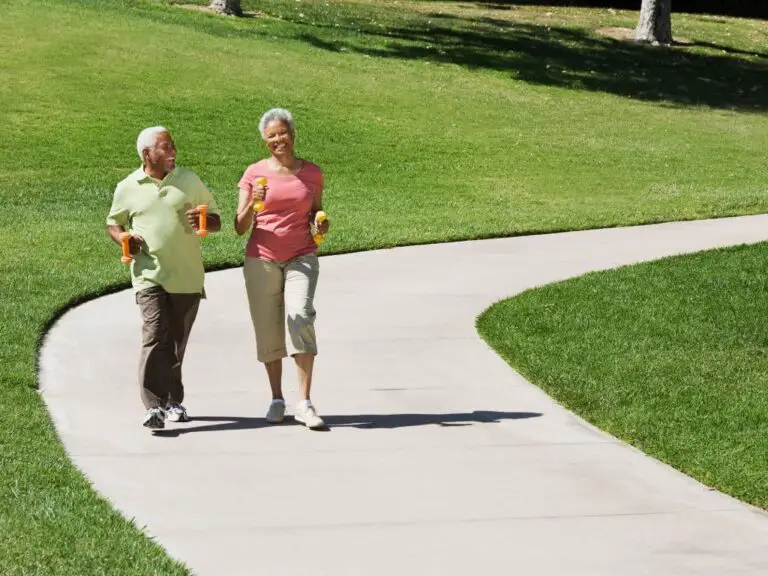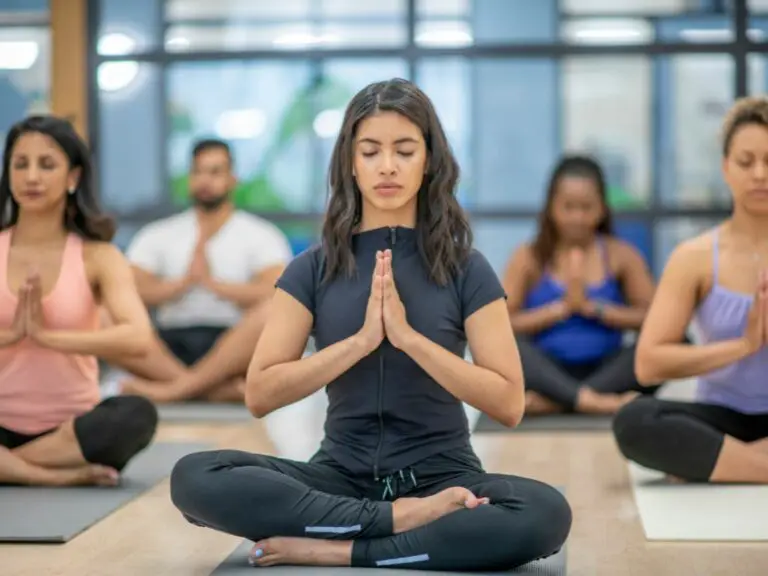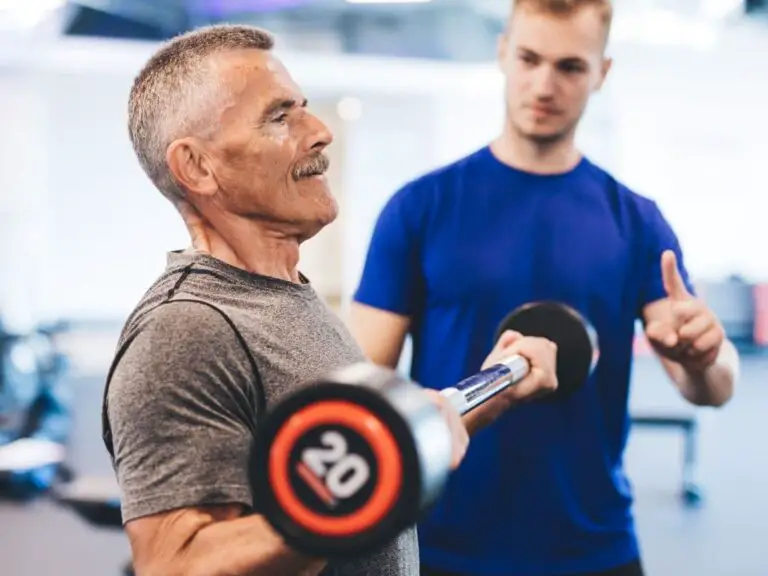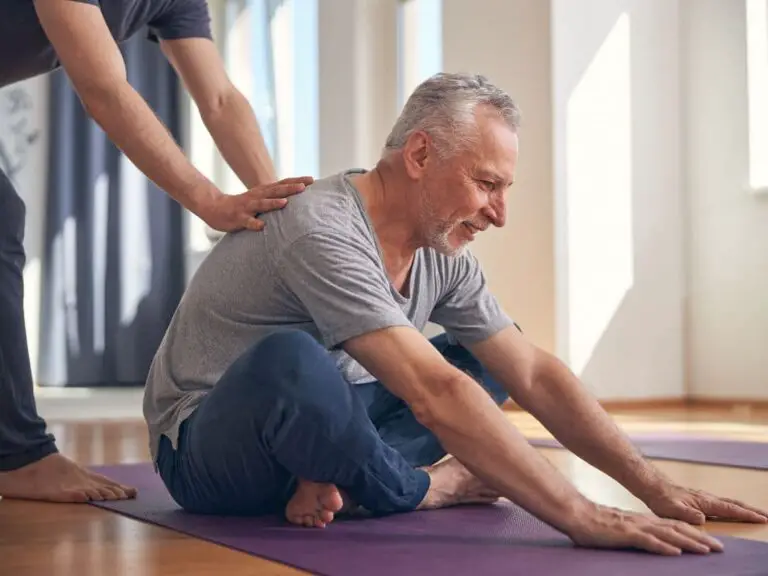Are Planks Better Than Sit-Ups?
Core strength is an essential component of overall fitness and health. The core muscles of the torso provide stability, support proper posture, and allow force generation for movement. Two of the most popular core exercises are the plank and the sit-up. But which one is more effective?
Planks are generally better than sit-ups for overall core strength, back health, functional fitness, and time efficiency. They engage multiple core muscles simultaneously and promote proper posture. However, if the goal is to sculpt a visible six-pack, sit-ups provide greater direct stimulus to the rectus abdominis muscle responsible for this appearance.
Planks and sit-ups target some of the same core muscles like the rectus abdominis, transverse abdominis, and obliques. However, they work the body in different ways. Understanding the differences between these two exercises can help you determine which is better suited to your fitness goals. This article compares planks and sit-ups on factors like core strength, back health, functional fitness, time efficiency, and versatility.
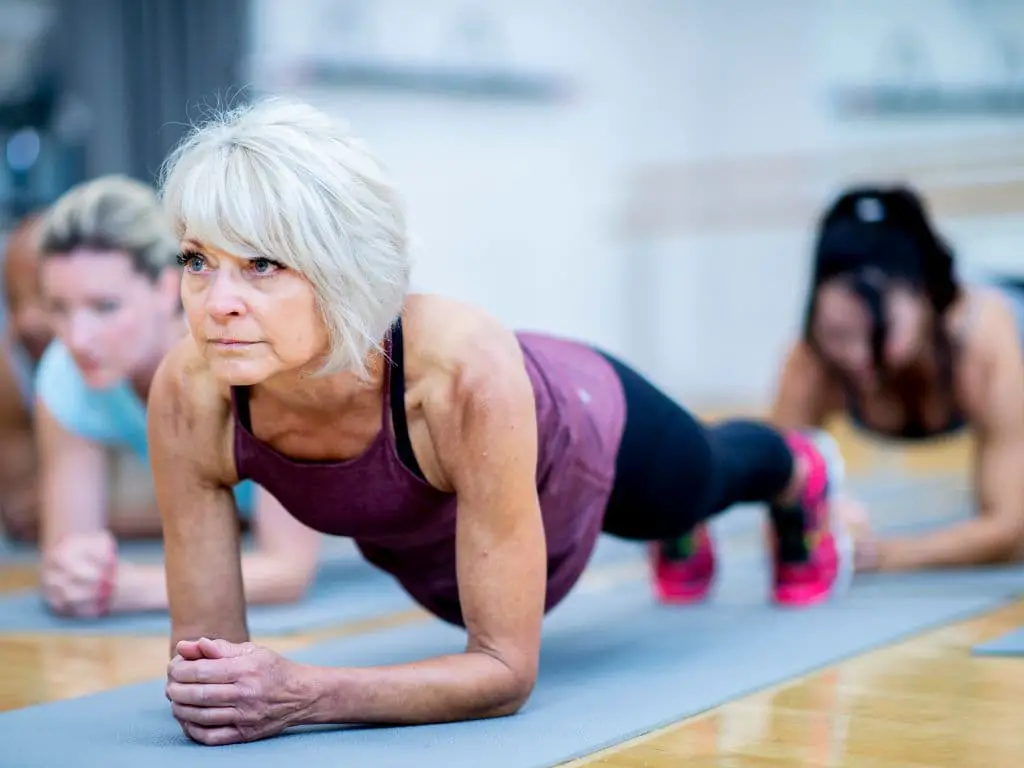
What Are Planks and Sit-Ups?
A plank is an isometric core exercise that involves maintaining a difficult position for an extended period. To perform a standard plank, you start in a pushup position and then support yourself on your forearms and toes. Your body should form a straight line from shoulders to ankles without sagging or arching. You then hold this straight planked position for as long as possible.
A sit-up is a dynamic core exercise that involves raising your upper body from a supine position by contracting your abdominal muscles. There are many variations, but a basic sit-up starts with you lying on your back with knees bent. You then engage your abs to curl your torso up towards your knees until your upper back lifts off the floor. Sit-ups are typically done for reps instead of time.
Here is a table comparing planks and sit-ups:
| Planks | Sit-ups | |
|---|---|---|
| Definition | Isometric exercise holding body in straight plank position | Dynamic exercise curling up from lying position |
| Primary muscles targeted | Transverse abdominis, obliques, rectus abdominis, back muscles | Rectus abdominis |
| Core activation | Engages entire core as stabilizer | Isolates flexion of rectus abdominis |
| Spine motion | Spine remains neutral | Spine repeatedly flexes |
| Back safety | Safer due to limited spine motion | Risk of over-flexion and compression |
| Six pack abs development | Moderate direct stimulus | High direct stimulus to rectus abdominis |
| Time efficiency | Very efficient due to short duration under tension | Less efficient due to higher reps required |
| Functional transfer | High due to core stabilization | Moderate due to flexion strength |
| Exercise variations | Side planks, reverse planks, planks with arm/leg extensions | Crunches, V-ups, russian twists, jackknives |
Which Exercise Is Better for Strengthening the Core?
Both planks and sit-ups can build core strength, but they do so in different ways.
Planks excel at activating multiple core muscles at once. By forcing you to maintain a straight rigid position, planks engage all of your major core stabilizers including the transverse abdominis, obliques, and back muscles. The tension builds core endurance and stability with consistent practice. Planks also improve posture by strengthening the muscles that support the spine’s natural alignment.
Sit-ups primarily target the rectus abdominis muscle that gives the six-pack appearance. Lifting and lowering your upper body against gravity in a controlled manner builds strength. Sit-ups overload the abs through their full range of motion. This builds power for flexing the torso during movements like a tennis serve.
For comprehensive core strengthening, planks may have a slight edge over sit-ups. But combining both exercises provides the greatest gains in overall core fitness.
Which Exercise Is Better for Building Six-Pack Abs?
If your main goal is sculpting visible six-pack abs muscles, sit-ups tend to provide greater direct stimulus.
During a sit-up, the rectus abdominis contracts concentrically to curl the spine and shoulders up off the ground. This flexion movement shortens the rectus abdominis through its fullest range of motion, placing maximal tension on the muscle fibers. Over time, this overload builds the visible bumps and grooves of six-pack abs.
In a plank, the rectus abdominis remains static and under submaximal tension as a stabilizer. This builds endurance but may not be enough to fully fatigue the muscle and prompt growth. However, adjusted variations like forearm side planks can increase oblique activation for sculpting the sides of the core.
So for that coveted six-pack, sit-ups and other flexing ab exercises tend to be superior when used consistently. But planks still play a role for overall abdominal development.
Which Exercise Is Safer for the Back?
When considering back health, planks are widely regarded as the safer option compared to sit-ups.
Planks keep the spine in a neutral position, limiting stress. With the back held straight and torso stabilized by the entire core musculature, planks avoid excessive loading on the spine. This promotes natural alignment and reinforces proper posture. Planks can even alleviate existing minor back pain in some cases.
Sit-ups require repeatedly flexing the spine through a wide range of motion. If done with improper form, this can over-compress spinal discs and irritate the facet joints. Sit-ups also provide little engagement for core stabilizers like the transverse abdominals and back muscles. This limits their benefit for building the muscular corset that supports and protects the spine.
However, done carefully with proper form, sit-ups remain useful. Focus on controlled motion, limited range, and good technique if including sit-ups for abdominal training. But planks tend to be the safer default for those concerned about back health.
Which Exercise Is More Effective for Functional Fitness?
For training functional fitness and athletic performance, planks tend to have broader carryover compared to sit-ups.
Most sports and daily activities rely on core stability and tension rather than pure spinal flexion strength. By training the body to maintain proper alignment under load, planks develop core endurance critical for function. Planks also strengthen key stabilizers like the transverse abdominis, obliques, and back muscles that aid movement and prevent injury.
Sit-ups build power for flexing the torso, which applies directly to some sports skills like throwing. However, planks better reinforce the core tension and spinal control needed when running, changing direction, and resisting impact. This makes planks highly effective for conditioning the body for diverse real-world demands.
If choosing one for general functional training, planks cover more bases. But a combination of both planking and some sit-up variations can optimize core function for sports and daily life.
Which Exercise Is More Time-Efficient?
For a quick and efficient core workout, planks have a clear advantage.
Maintaining a solid plank for just 30-60 seconds per set provides a meaningful training stimulus. Since planks are an isometric hold, you can rapidly fatigue the core muscles without the time required for performing reps of dynamic exercises like sit-ups. This allows planks to be completed in shorter timeframes while still overloading the core effectively.
Sit-ups build strength through higher rep ranges, often 8-15 reps per set. At 1-2 seconds per sit-up, this takes significantly longer to complete than a 30-60 second plank. Sit-ups also require more rest time between sets due to the greater muscular fatigue from dynamic exertion.
For this reason, planks are ideal for a quick core routine when time is limited. Knocking out just 2-4 plank sets in a few minutes can train core strength while sit-ups would require upwards of 5-10 minutes for the same benefit. However, longer sit-up workouts remain useful for maximizing abdominal hypertrophy results.
Can I Do These Exercises at Home?
The great news is that both planks and sit-ups can be performed at home without any equipment, making them highly convenient core exercises.
Planks just require a mat for comfort on the floor. You can plank anywhere with a couple feet of open space. Adjust leverage by resting on forearms versus hands to increase difficulty. Use towels under elbows if needed.
Sit-ups can be done on any flat surface, though padding is recommended. Anchor feet under heavy furniture for added resistance. Vary speed and range of motion. Advanced options like twisting sit-ups require no equipment.
For maximum effectiveness, combine planks and sit-ups in the same home core workout. Hit planks first when your core is fresh. Follow with sit-ups as muscles fatigue for a comprehensive burn. Minimal equipment needed makes these ideal for home training.
What Are the Different Variations of Planks and Sit-Ups?
There are many ways to modify planks and sit-ups to alter muscle emphasis and difficulty. Trying different versions exercises different core muscle groups.
Plank options include:
- Forearm side plank – Works obliques
- Hand side plank – Easier leverage than forearms
- Reverse plank – Targets abdominals rather than lower back
- Plank with leg lift – Increases core fatigue
- Plank with arm/leg extension – Adds balance challenge
Sit-up alternatives include:
- Crunches – Limited range to isolate abs
- Full sit-ups – Works entire core through fuller motion
- V-ups – Hits lower abs by bringing legs and torso together
- Russian twists – Rotates obliques with twisting motion
- Jackknives – Trains core control by alternating arm/leg extension
Varying your plank and sit-up selection over time keeps your core workouts dynamic while preventing muscle adaptation.
How Do I Properly Do a Plank and a Sit-Up?
Using proper form is crucial for maximizing the effectiveness of planks and sit-ups while avoiding injury. Here are some form tips:
Plank form:
- Keep back flat, neck neutral, eyes down
- Contract core to prevent sagging hips and arched back
- Align shoulders over elbows with weight distributed evenly
- Squeeze glutes and thighs without rotating hips side-to-side
- Hold position for time, focusing on tight core and steady breathing
Sit-up form:
- Bend knees with feet anchored firmly on the floor
- Cross arms over chest or place hands beside head without pulling
- Engage core and lead with shoulders, avoiding neck strain
- Exhale on exertion, keeping elbows wide without pulling head
- Slowly return back to floor with control, rolling vertebrae down one-by-one
Focus on quality, not quantity. Do fewer reps with excellent form over sloppy high-rep sit-ups. Proper technique optimizes results while preventing injury.
How Long Should I Hold a Plank or Do a Sit-Up?
Recommended plank and sit-up volume depends on your fitness level and goals. Here are some general guidelines:
For planks, newer exercisers should start with holds of 10-30 seconds, 2-3 times. Gradually increase your planking time week-by-week up to a 60-90 second max hold. More advanced athletes can sustain planks for several minutes at a time.
For sit-ups, aim for 8-15 reps per set for 2-3 sets if building strength. Focus on control: 1-2 seconds up, 1-2 seconds down. Higher reps in the 15-25 range build muscular endurance. Increase volume by adding sets rather than just cranking out more sloppy reps each set.
Listen to your body and reduce reps/time if form declines. Quality over quantity ensures safety and optimal gains over time. Consistency is key.
How Often Should I Do Planks and Sit-Ups?
Planks and sit-ups can be performed safely 3-5 times per week as part of a balanced core workout routine. Here are some guidelines:
- Avoid planks and sit-ups on consecutive days since the core needs rest to recover
- Vary the exercises each session for balanced development (i.e. planks on Monday, sit-ups on Wednesday, etc)
- Allow at least 1 full day of rest per week to maximize gains
- Beginners should start at 2-3 sessions per week and gradually increase frequency
- Monitor for excessive soreness and fatigue that signal overtraining
- Pair with other complimentary core exercises like side planks or leg raises
Aim to stimulate the core frequently while allowing adequate recovery between stimulating the same muscles again. This promotes steady improved conditioning over time.
What Are Some Other Exercises That I Can Do to Strengthen My Core?
While planks and sit-ups are excellent exercises, combining other moves can enhance overall core strength development:
- Side planks target the obliques in a stabilizing isometric hold
- Deadbugs train core control by extending opposite arm and leg
- Bird dogs build stability through alternating arm and leg raises
- Hollow body holds force core bracing by raising arms/legs off the floor
- Pallof press improves anti-rotation and resisting lateral forces
- Lying leg raises – isolate lower abs by raising legs from ground
- Russian twists – sitting oblique rotation with medicine ball or weight
- Cable chops – train obliques and core rotation with cables
Pair these exercises with planks and sit-ups in each workout to create a more comprehensive core stability routine. This provides balanced strength for greater gains.
Conclusion
Planks and sit-ups can both be excellent core exercises, but they have distinct benefits. Planks build total core stability and endurance, making them efficient for strength, back health, and functional fitness. Sit-ups better isolate the abs through flexing movements for sculpting six-packs.
For well-rounded core development, a training program should incorporate both planks and sit-ups along with other complementary exercises. Vary your core routine over time while focusing on proper form to maximize gains and prevent injury. With consistent training, planks and sit-ups can help strengthen the core for improved fitness, function and aesthetics.
Frequently Asked Questions
-
Does walking strengthen core muscles?
Reddy says that dancing, swimming, biking, running, skipping rope and stair climbing can all be great ways to strengthen your core muscles. Ojha suggests at-home abdominal exercises for similar results.
-
Why shouldn’t seniors do abdominal crunches?
Crunches can be dangerous for senior citizens as the back is more fragile over time. Crunches that are done wrongly can cause serious injuries to your back joints. The repetitive curving or twisting of the spine can cause problems even if it is done correctly.
-
Are planks good for 70 year olds?
Traditional abdominal exercises can be difficult for seniors, particularly if the senior has lower back issues. Plank is the best exercise to do for your abs. The plank is a way to get your abs in order. Place your elbows, knees, and head on the ground. Keep your upper body up.
-
How can I strengthen my core after 60?
Modified Plank: Tighten your abdominal muscles, lower your body to your forearms. Keep your feet high and your shoulders over your elbows. Your back should be straight so that your body looks as if it is a plank. Keep the same position, and then return to your starting position.
-
Should you do side planks on both sides?
Both sides. It will be more difficult to balance your weaker side (at least, mine was).
-
What happens if you do 1 minute plank everyday for a month?
This is a great exercise because it works your entire core. A weaker core can mean you need to train harder in order to keep form. You also have to use more energy to run farther. It may be felt in the lower back and shoulders, but I didn’t feel it.
-
How do you know if you’re doing a plank correctly?
The floor should face your nose, and your back should meet the ceiling. With your toes bent, extend your right leg and bring your left to the floor. Your hands and your toes should support the weight of your body.
-
Will doing planks everyday flatten my stomach?
Do not believe fitness claims that planks will burn belly fat. Never. You will never flatten your stomach with planks.
-
Do planks burn belly fat?
You will not get belly fat burning results if your stomach is lower while you hold the plank. Keep your stomach up and ensure that you keep your back and shoulders in line.
-
Is planking better than sit-ups?
Once, sit-ups were the best way to get tighter abs. “Planks” are merely flooring. Planks, which require you to assume a certain position and then hold that position, have become the standard in core training. Crunches and sit-ups are no longer popular.

